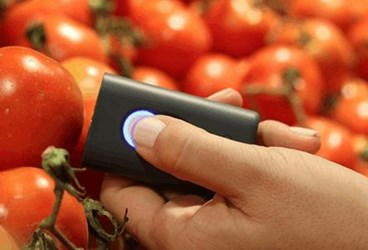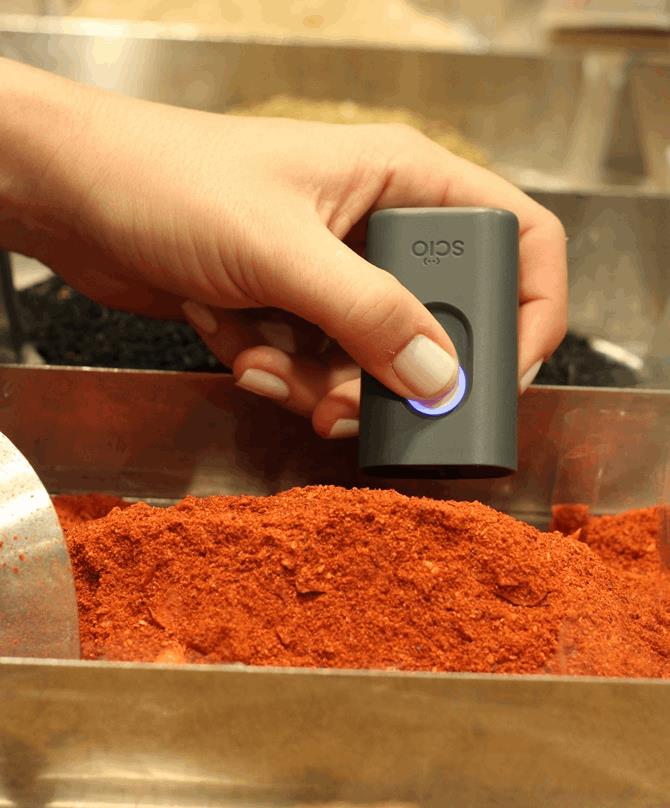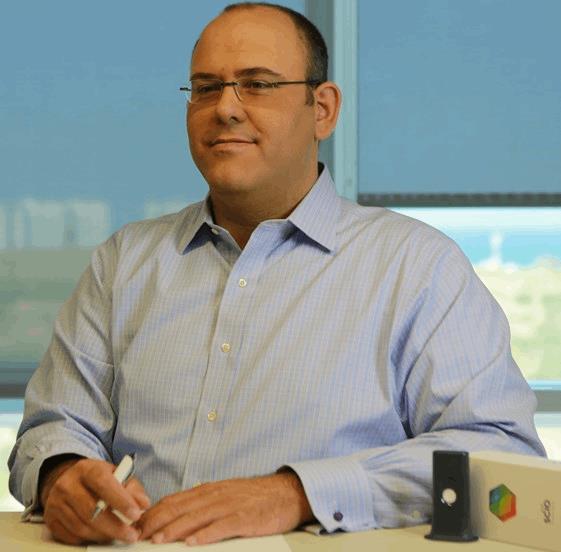NIR Spectroscopy: Out Of The Lab And Into Your Pocket
By Ed Biller

Consumer Physics’ SCiO is a handheld spectrometer that empowers users to gather instant feedback on the chemical make-up of materials around them. The device uses a no-touch optical sensor to gather information and the data is sent, via Bluetooth, directly to the user’s smartphone, a system that allows for the product’s miniature size.
Much as Tribogenics miniaturized X-ray technology to improve its accessibility to consumers, Consumer Physics has miniaturized near-infrared (NIR) spectroscopy to scan physical materials. In just a few moments, the device can compare a scanned object to a database of physical objects to see if the subject fits within a signature of previously identified objects.
Consumer Physics CEO Dror Sharon said he and company co-founder Damian Goldring evaluated other sensor technologies for consumer use, but settled on NIR spectroscopy as a technology that could be miniaturized and cost-efficient when used in tandem with a smartphone.
“You have a smartphone ecosystem with about 1 to 1 ½ billion smartphones made a year, which means you've got billions of optical sensors being designed and built in a year, and that gave us the comfort level [to] come up with a design and technology that can leverage that engineering,” Sharon said.
Both Sharon and Goldring boast electrical engineering and optics backgrounds, and together they’ve produced a platform with near limitless possible applications, powered by a standard lithium-ion battery and built around a sensor just 9 mm thick, “a remarkable achievement by the engineering team,” Sharon said.
“It’s a very complex, multidisciplinary product: the optical sensors, the mechanical confinement, the Bluetooth connectivity. There are internet connectivity sensors, the databases, the algorithms, the applications themselves, and how do you run them?” Sharon added. “I think solving version one was a great challenge, but we’ve got a long way to go before we crack all the nuts and really polish it towards perfect.”
 SCiO’s first generation, out of the box, can analyze food (for nutritional information), plants (their well-being, specifically), and even identify capsules containing medicine or nutritional supplements. While the initial materials database has been created by Consumer Physics, it will grow as consumers use SCiO for more and more varied applications.
SCiO’s first generation, out of the box, can analyze food (for nutritional information), plants (their well-being, specifically), and even identify capsules containing medicine or nutritional supplements. While the initial materials database has been created by Consumer Physics, it will grow as consumers use SCiO for more and more varied applications.
More than 1,500 researchers and scientists already are using the company’s DevKit app to create their own applications, in everything from industry to cosmetics. Several thousand more users — mostly investors who contributed to SCiO’s Kickstarter campaign, which raised more than $2.7 million, despite an initial goal of just $200,000 —will be able to create their own applications with the company’s SCiO Workshop, a simplified version of the DevKit app introduced at the Consumer Electronics Show (CES) 2016 in January.
Of course, data integrity is a concern for any such crowd-sourced database, and Consumer Science has taken a layered approach to its preservation.
First, the company created its own materials database for the initial launch. Second, the company will prioritize the type of databases to which SCiO users can contribute, according to the data integrity resolution cost: detergents, pharmaceuticals, and other items that are made to a relatively consistent specification fall within this group (i.e., if something in those categories scans with a completely different makeup, there is likely fraud or an error). The third layer of data security is minimal implementation of crowd-sourcing capabilities.
“The first version of the app enables you to scan your own spectra and see how they look. So, you can teach your own device, but not necessarily contribute to the entire database. You start creating your own specific databases,” Sharon said. “The next step will be, for some of these very specific materials, people can start contributing, because it will be very easy to see the contribution is false or not.”
The device is expected to ship in larger quantities in October, and more people will be able to contribute more data to the database as mechanisms are put in place, be they automated or manual, to verify the accuracy of the scan information. And, while SCiO is not currently intended for clinical use as a medical device, Sharon did not rule out that possibility in the future.
“There’s a ton of work to do to get that to that level of engagement, but we’re lucky enough to have a large developer community. Some of these folks are medical center doctors, or researchers in biology, and we hope that they will be at the forefront of using this technology to begin analyzing tissue in humans, or even for veterinary issues or cases,” said Sharon, who previously worked for a surgical device company.
“I have a great respect for clinical needs. That requires very strong data, understanding what you’re doing, and random trials, getting the regulatory checkmarks,” he added. “So, I really think that there’s definitely a future for this, but for now, we are not focusing on it. We really want to make sure [first] that we provide clear value to consumers, that people enjoy the product, and hopefully, over time, the clinical applications make sense.”
However, Consumer Physics already has started preparing for down-the-road applications for its platform, partnering with Analog Devices in February.
“Partnering with Analog Devices enables us to super charge the ability of this technology to be further miniaturized and cost-reduced, so that one day we can imagine it being inside every smartphone. [Analog Devices has] the engineering talent, manufacturing supply chain, operations, and frankly, also the relationships to make that happen,” Sharon said. “Additionally, their engineering strategies can help us go beyond the capabilities of the current sensor, so more communication spaces are opened up — the industrial space, the automotive space, the outsource space, the industrial IoT space. These are spaces where robustness is key.”

“Consider the following: You go to Home Depot, you want to buy plaster to renovate the kitchen wall. You have an inkling that it might not be the best quality and you just want to make sure that the $55 one is better than the $45 one. The ability to test it in real time is zero today,” Sharon said. “You need to maybe look at the label, talk to the sales associate, maybe look it up online, but that’s basically it, right? There’s no way for you to physically test that very specific plaster wall.”
Sharon said the same principle holds true for steak, fruit, pills, or paints.
“All of us can get used to the notion that yes, we can test — we should want to test — plasters, pills, our human body, what comes out of our human body, things that we buy, that we drink, that we eat,” he said.
All images courtesy of Consumer Physics.
